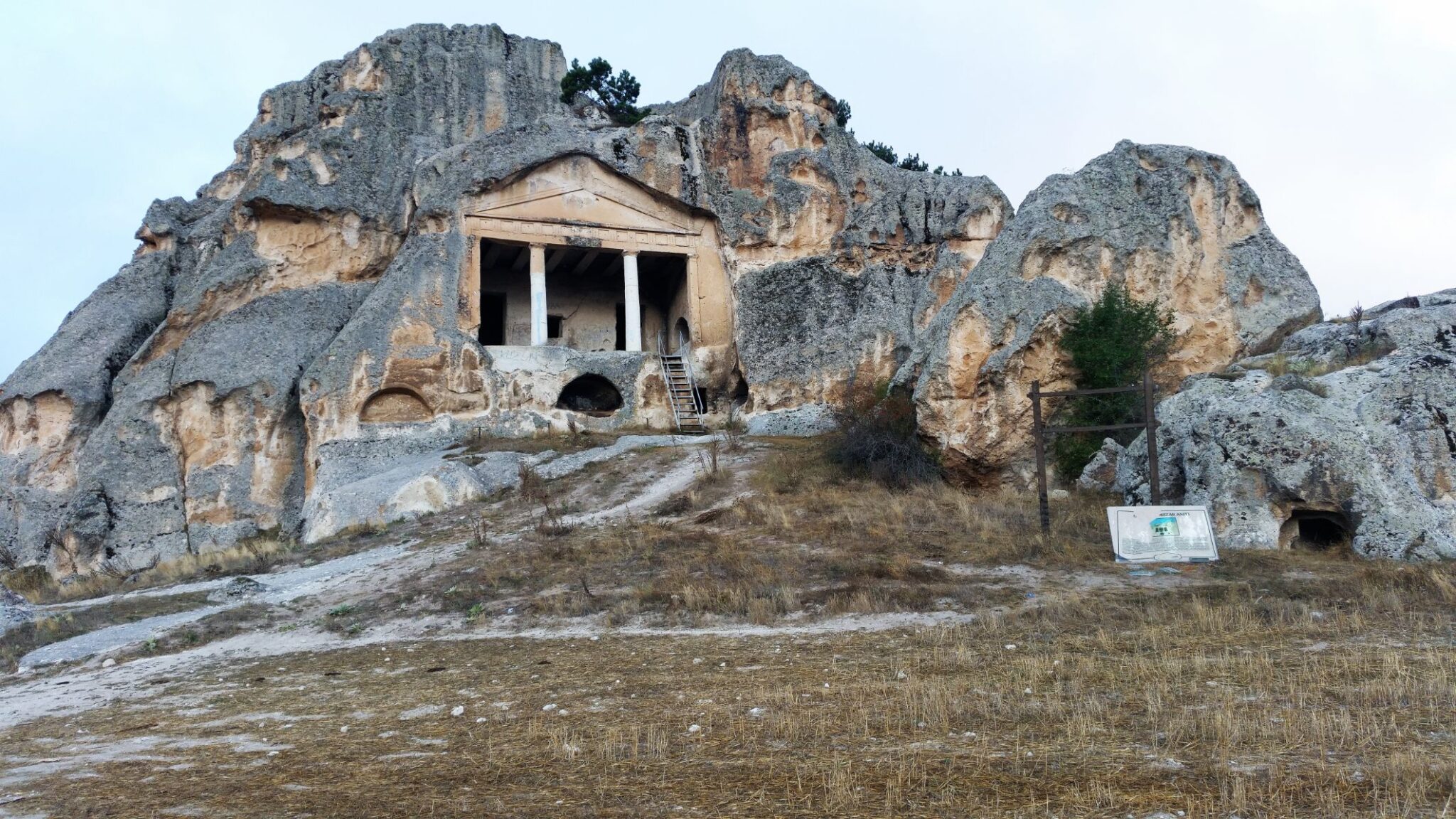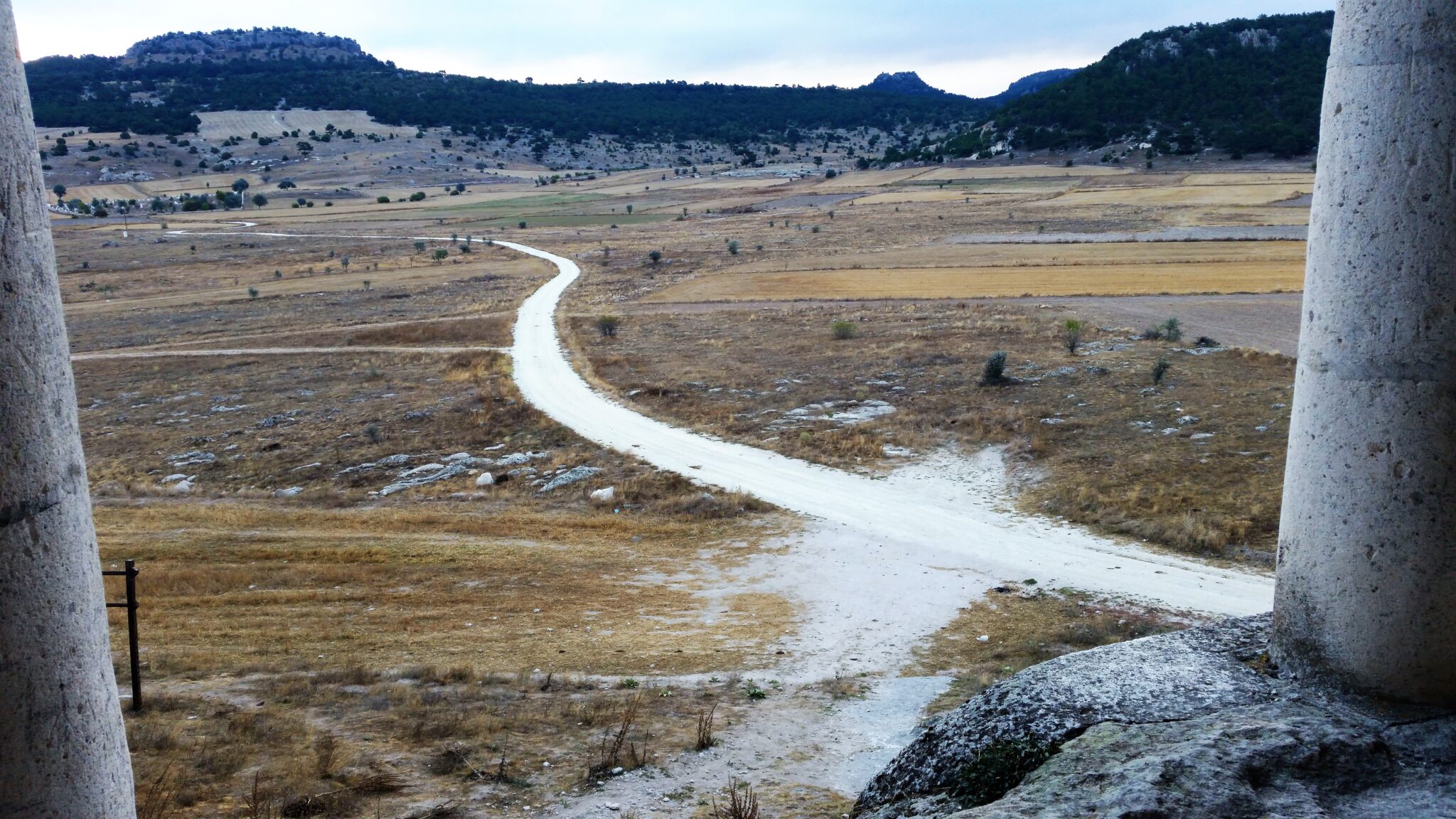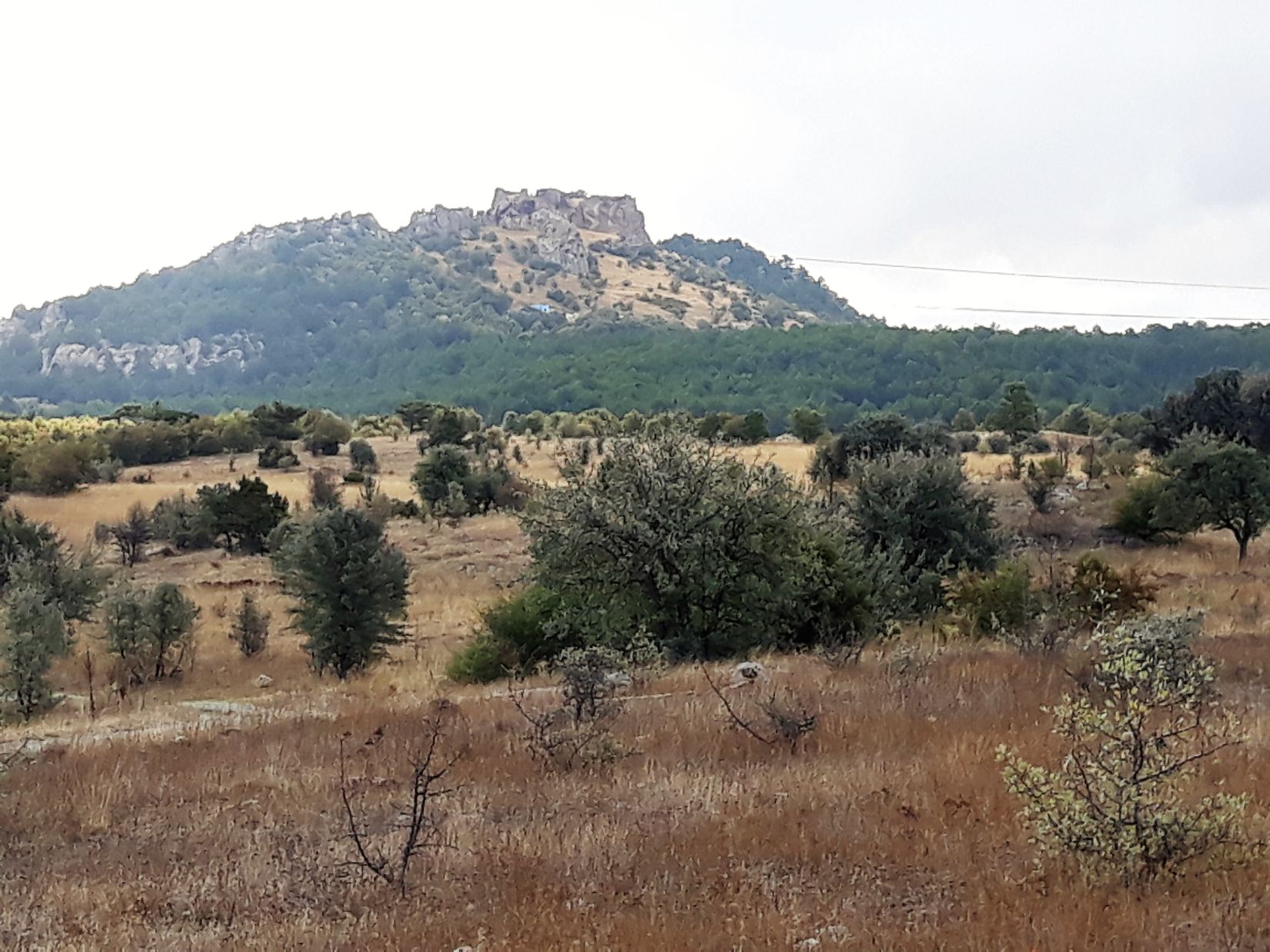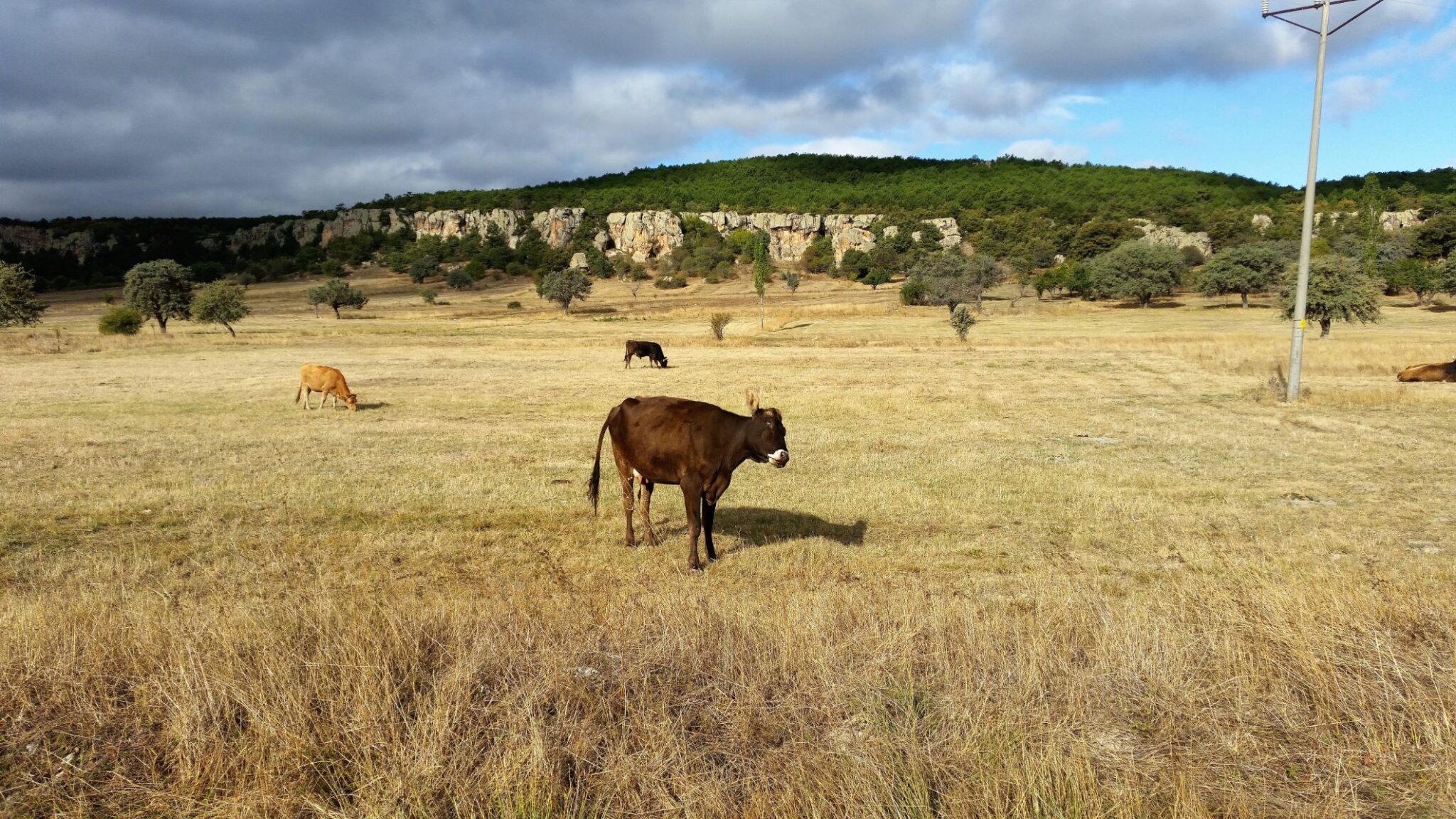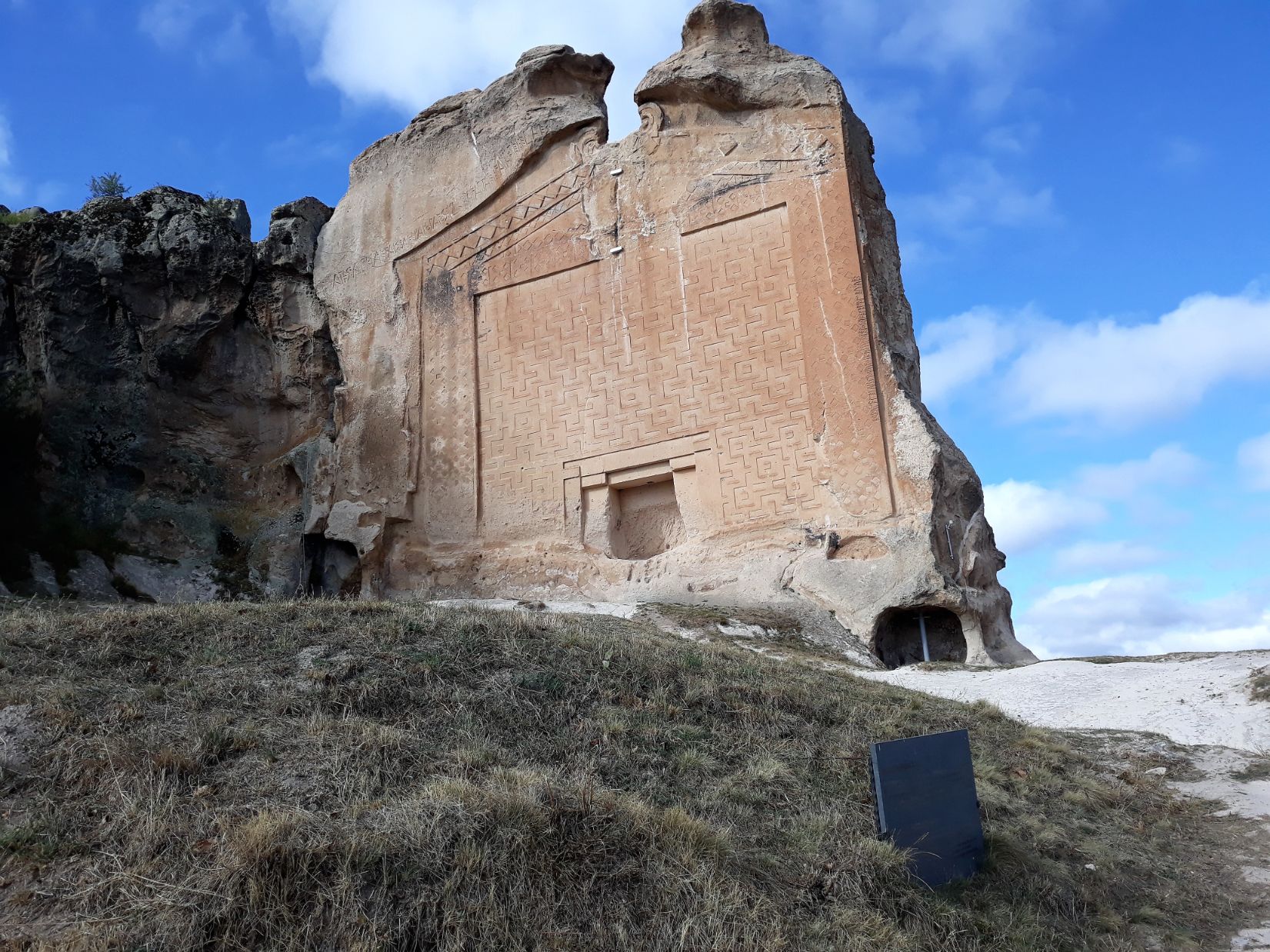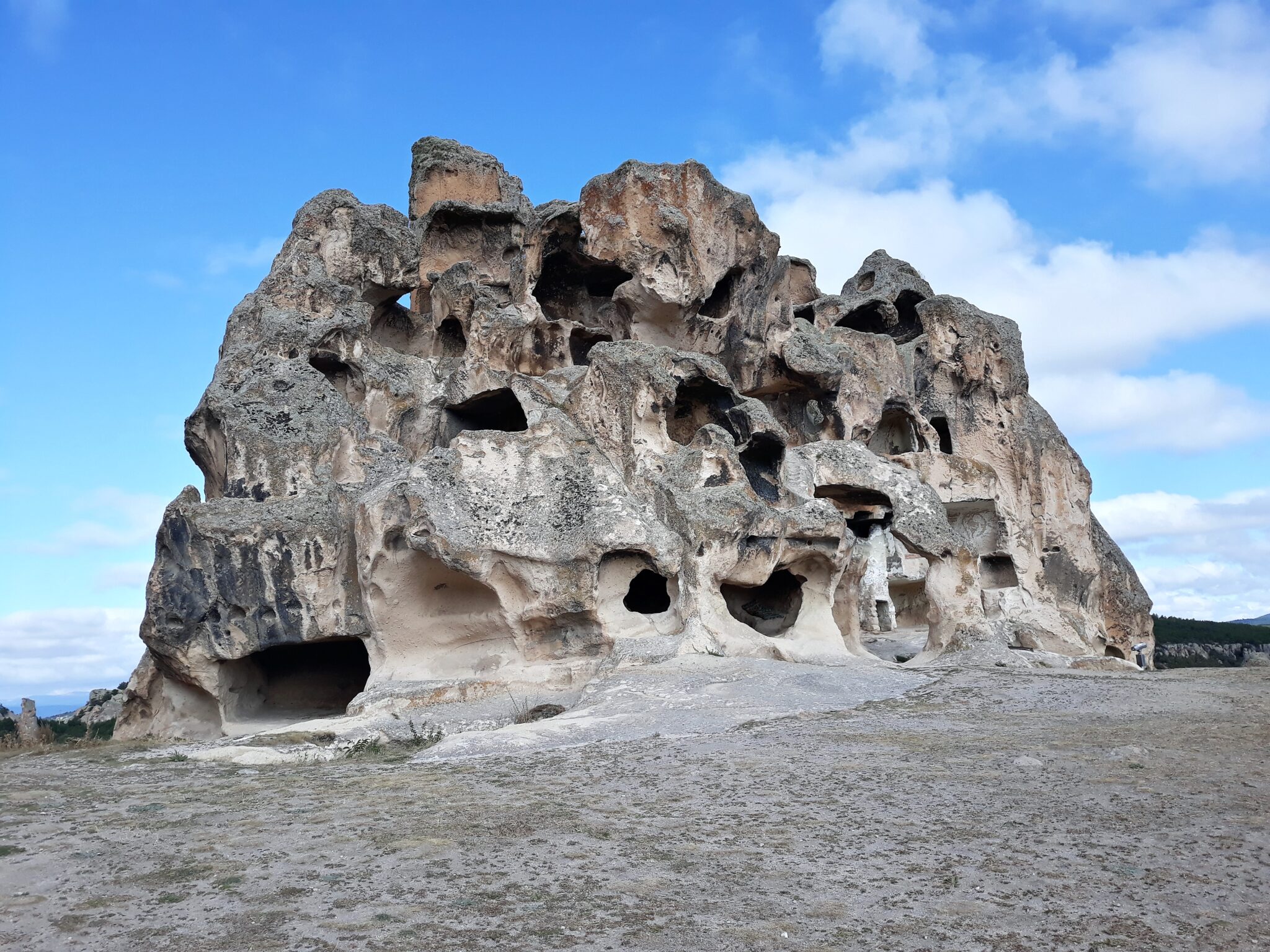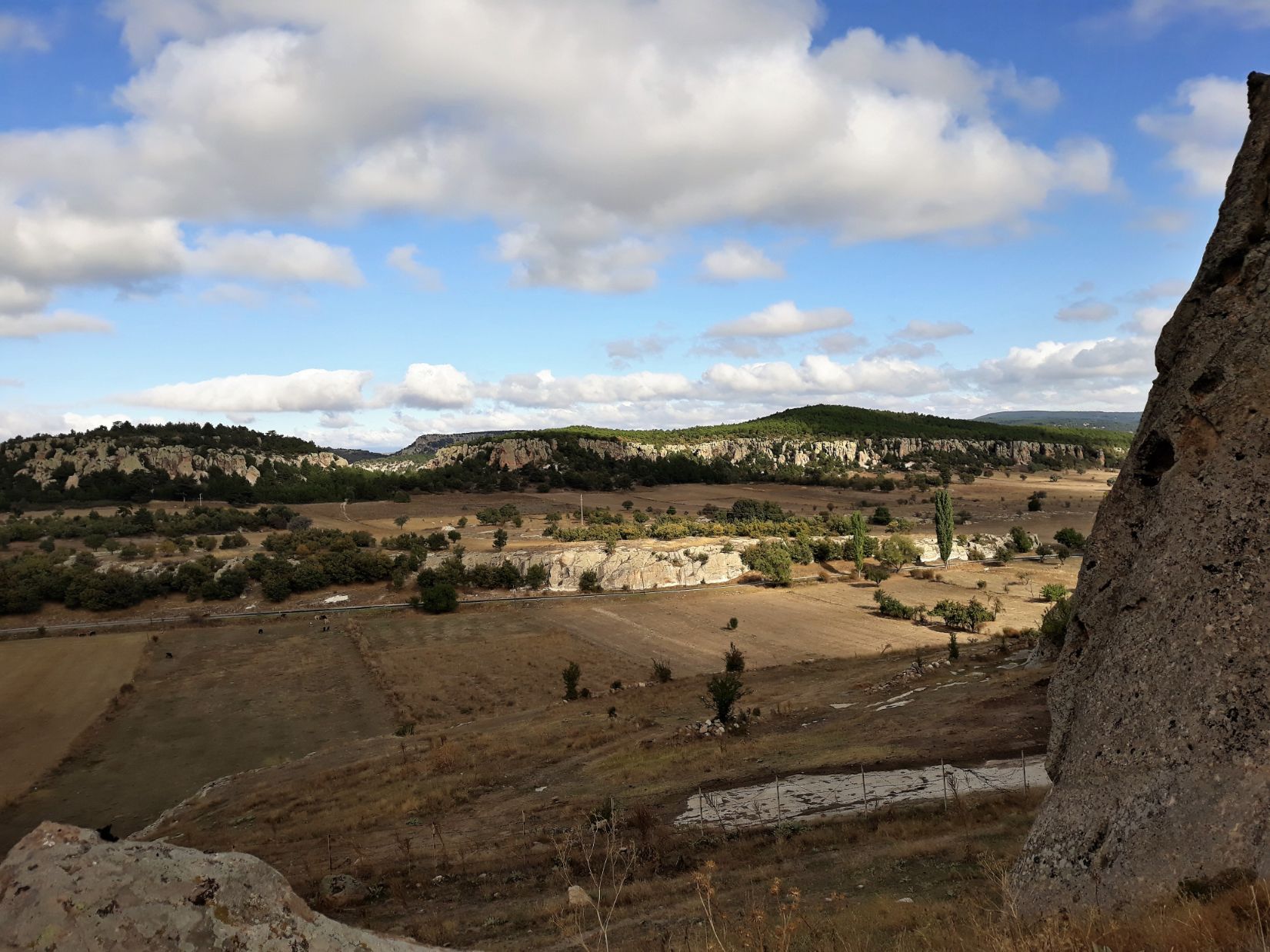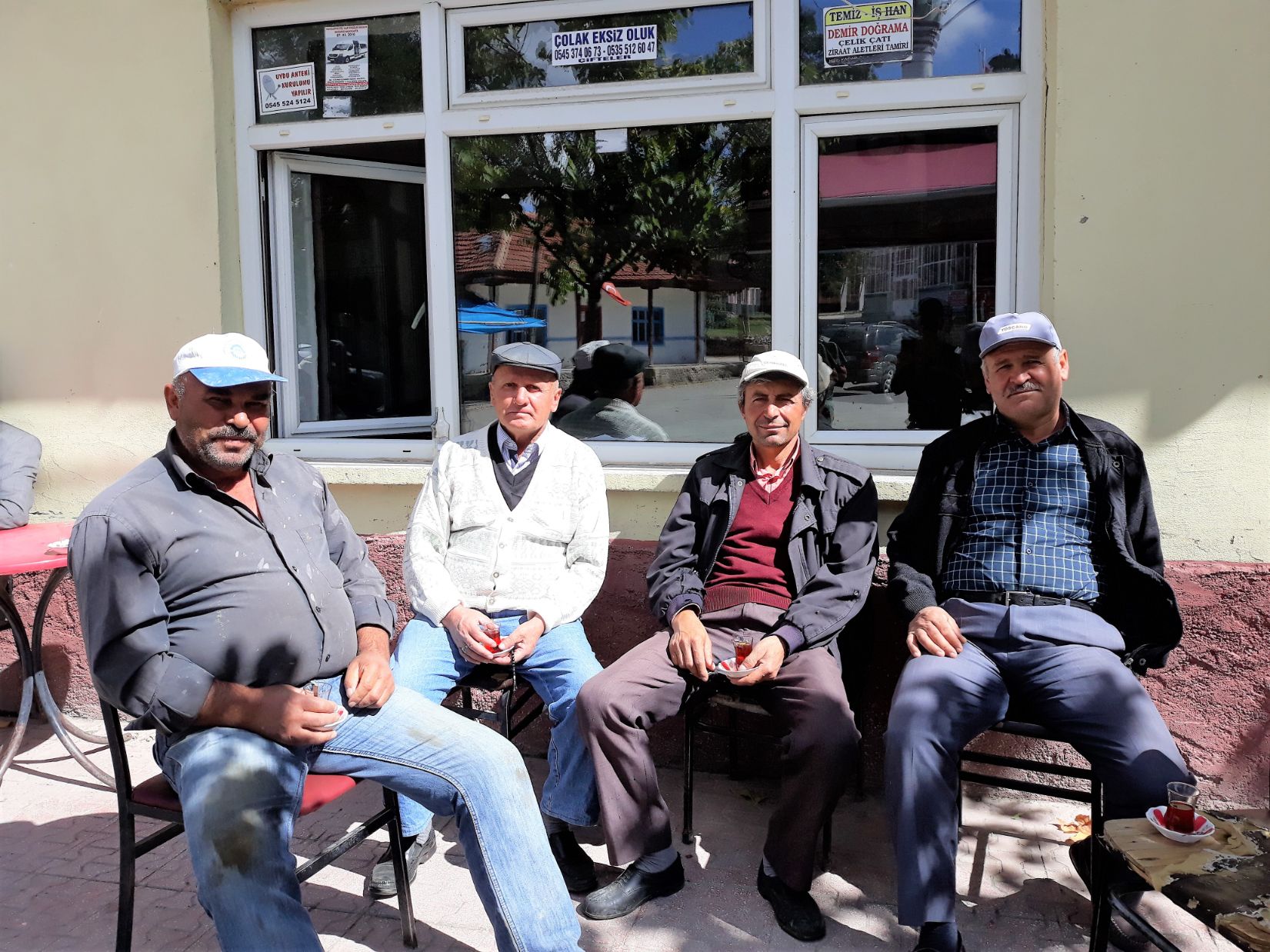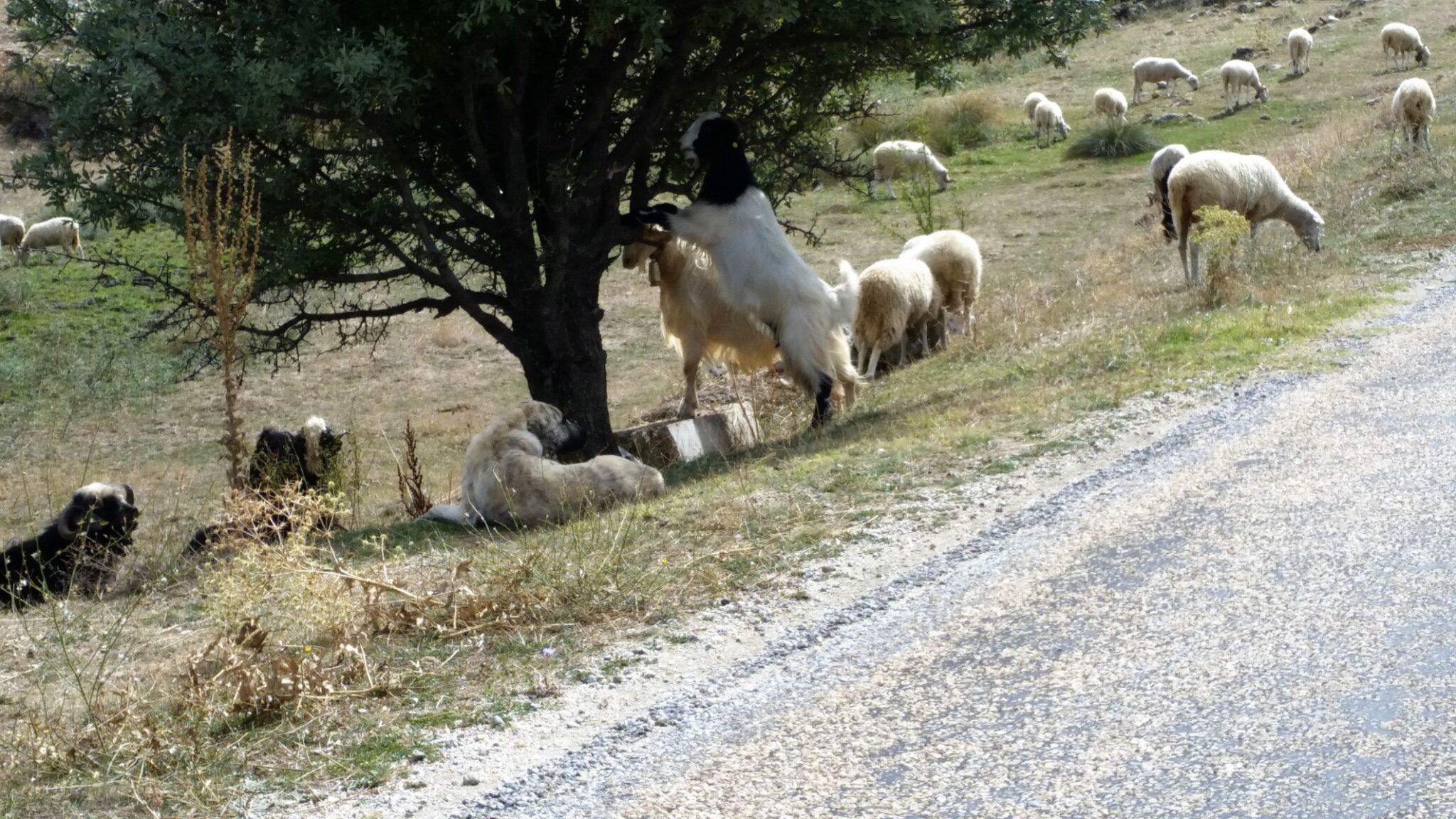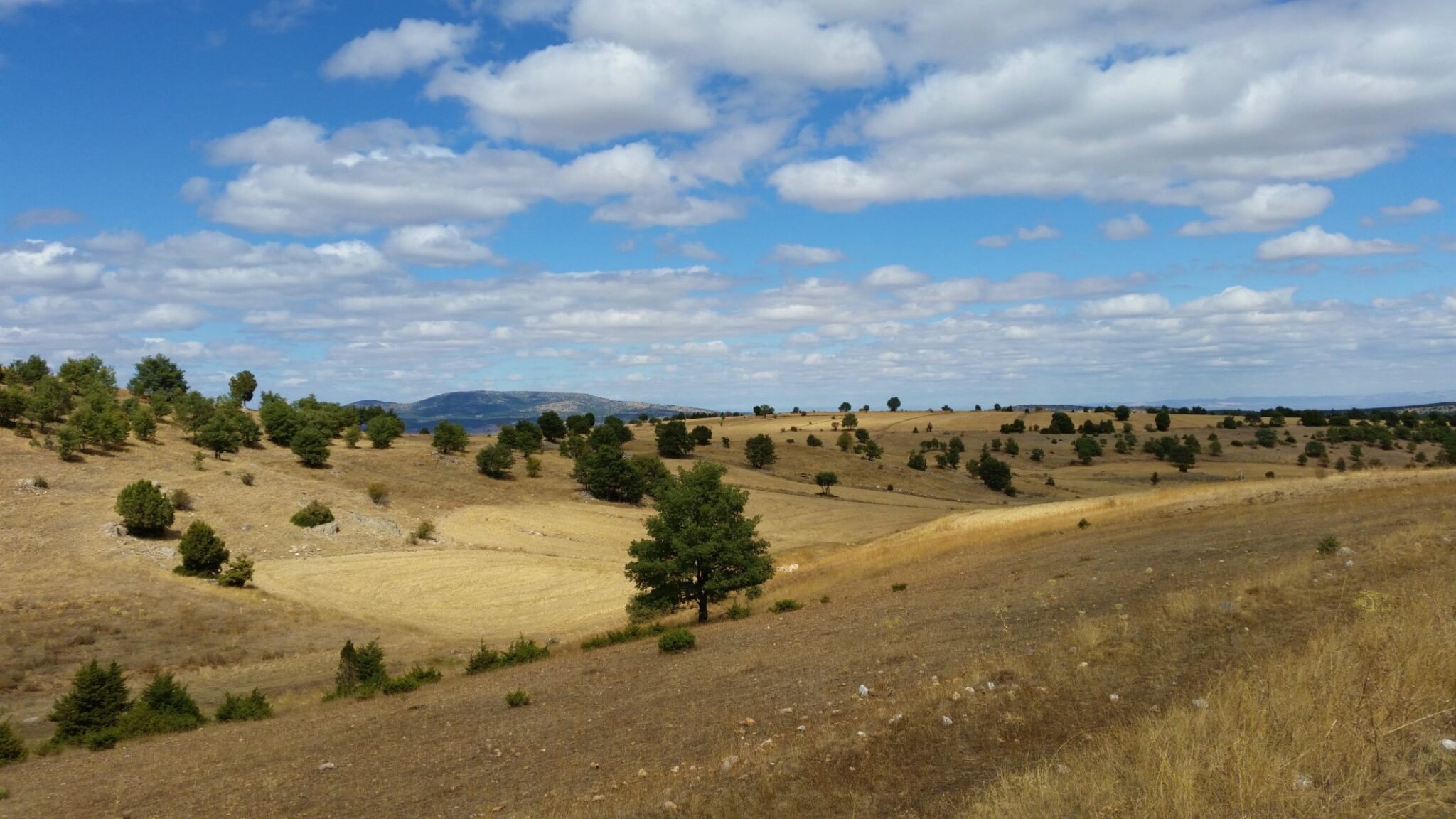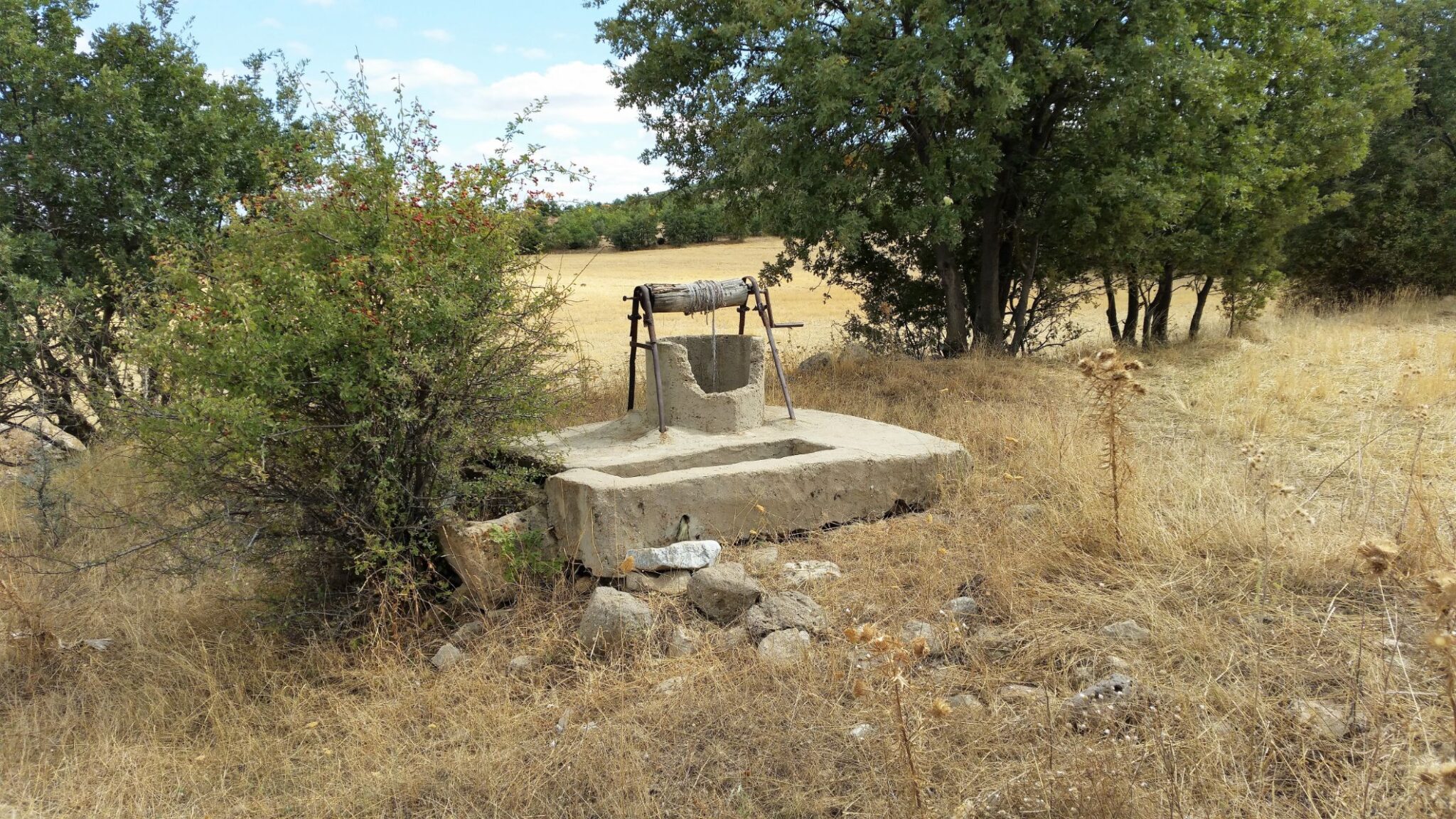Midas Han to Han to Çifteler – 21st September
Distance: 23.3 km – Elevation +320 m -340 m
Weather: Sunny. Temperature: High 18 degrees
Midas Han lies on the edge of the open plain and with a cold wind blowing it was a very chilly night. After a delicious supper, I retired to my room and slept well beneath a very thick quilt. The hotel is run by Ben and Nihal, Ben is Dutch and Nihal Turkish. They are partners in the project that renovated a village house and with additions created Midas Han, a boutique hotel and campsite. They are both archaeologists with a special interest in the Phrygian Valley.
Before breakfast I walked to the nearby Gerdekkaya Anıtıt, a tomb monument, dated to the Hellenistic age (3rd-1st century BC). Constructed about 3 metres from the ground, it is carved into the eastern face of a large rock formation, in the shape of a Doric temple, with its façade, a triangular pediment and entablature supported by two columns. Its use extended into the Roman and Byzantine periods. It was restored in 1991 by the Eskişehir Museum Directorate. It is an extraordinary structure with its monumental hall carved into the bedrock behind the façade and contains two burial chambers. Before returning to Midas Han for breakfast I stood within the monument admiring the view back to Çukurca and the distant Phrygian castles, Akpare Kale and Pismis Kale.
After breakfast I said my goodbyes to Ben and Niha and set off to walk to the Midas monument in Yazılıkaya. It was bitterly cold as I set out requiring the wearing of my hiking jacket foŕ the very first time on this journey. Yet despite the cold, it was a beautiful walk with wide-open skies of blue and puffy clouds. With the Phrygian castle of Pismis Kale almost always in view, it was as if I was being watched over by ancient Phrygian guards. I passed by fields of gold, bathed in the light of the early morning sun where the colours of a herd of cattle blended effortlessly into the landscape as they grazed on the stubble left from a recent harvest.
It was about an hour’s walk to reach Yazılıkaya and on approaching the village I could see distant views of “Midas City” and on entering the village I was greeted by a pack of noisy village dogs awoken from their slumber by my intrusion into their territory. Walking through the village I met and was escorted to the monument by a villager who later brewed tea for me in the reception rooms. What a monument it is, extraordinary in every way.
“The most important and the most spectacular structure in Yazılıkaya is called the Midas Monument. It is a beautifully decorated façade, carved into the vertical rock, dating back to the 7th or the 6th century BC. Its appearance resembles an entrance to a temple, but actually only a very shallow niche is carved into the rock. Most probably it used to house a statue of the goddess Cybele, also known among the Phrygians as Matar.
The façade has a square shape with a side length of 16 meters. It is an imitation of the Phrygian megaron, a rectangular structure with a large, deep hall fronted by a much shallower anteroom or porch. The niche, carved into the rock, is surrounded by geometric patterns, evoking the maze. The whole structure was topped was an acroterion, but unfortunately it has not been preserved to our times.
Above the façade, there is an inscription in Old Phrygian, carved into the rock. It states that a certain Ates, perhaps a priest, dedicated this monument to King Midas. Because Phrygia was ruled by several kings bearing this name, the researchers are not able to clearly identify the monarch who was honored by this monument.
Opposite the Midas Monument stands a massive rock formation called Kırkgöz Kayalıkları (i.e. the Rock of the Forty Eyes). It was used in the Hellenistic, Roman, and Byzantine periods. A monumental rock tomb from the Hellenistic times is on the east side. It has two chambers, and its vault was originally supported by two pillars, now destroyed. In the Byzantine period, a multi-storied settlement was carved in the rocks, with multiple chambers, passages, and stairways.” ( https://turkisharchaeonews.net/site/yaz%C4%B1l%C4%B1kaya-midas-monument)
After exploring the spirit world of “Midas City” I set out to Han where I hoped I would be able to find a bed for the night. The route took me first to the village of Kayi where I was invited to join four of the village elders for tea in the village tea house. I am not certain of this but I guess the residents of the village are descendants of the Kayi tribe, one of the 24 ancient Turkmen (Oghuz Turkic) tribes, direct descendants of Oghuz Khagan. Oghuz Khagan is a semi-legendary figure thought to be the ancient progenitor of Oghuz Turks.
From Kayi the road took me through beautiful countryside and just before reaching the village of Ağlarca I met a large herd of goats that crossed the road in front of me, with no dogs, or shepherds in sight and seemingly controlled by three magnificent black coated rams. Many of the goats had bells attached to their necks producing a wonderful musical sound in the otherwise silent countryside – it was a magical moment.
Later I was passed by a motorcyclist who stopped and offered me a lift. About 5 kilometres from my destination I passed a donkey eating in a field, and shortly after the donkey appeared by my side and kept me company for the next 3 kilometres!. I arrived at my destination of Han at 3.00 pm. where I was told by a local shopkeeper who spoke very good English that there was no available accommodation in the village and the nearest hotel was in Cifteler 35 kilometres away in the wrong direction. He said a bus departs at 4.00 pm. And pointed to the bus driver who was sitting at an outside table sipping a cup of coffee. So I sat and waited and took the bus to Cifteler.
I found the hotel in a run-down building near the bus station and was greeted by a rather grubby man who told me there were no available beds. A well-dressed man nearby overheard the conversation and indicated he could help and took me to a cafe and then disappeared. Whilst waiting for him to return the young man serving teas asked why I was there, I explained and he called a friend who arrived soon after. His friend spoke good English and together they took me in their car to the ‘Teacher’s House’ where again there were no available rooms but not to be defeated they made further telephone calls and found a hotel for me 3 kilometres out of town and took me to it in their car – they were remarkable young men. The kindness of the Turkish people never ceases to amaze me.
The hotel was clean and comfortable and was located in the area of the Sakarıbaşı which is the starting point of the Sakarya River. There are several lakes formed by springs and despite being tired after a long day I took a late stroll and found a wedding celebration in full swing. It is also a picnic area and there were still a couple of kiosks open where I was able to buy a few snacks and drinks which I took back to the hotel.
My destination for tomorrow is Emirdag which is a 35 kilometres walk from Han where I finished today and it is also 35 kilometres from where I am now, so rather than return to Han I will walk directly from here.

